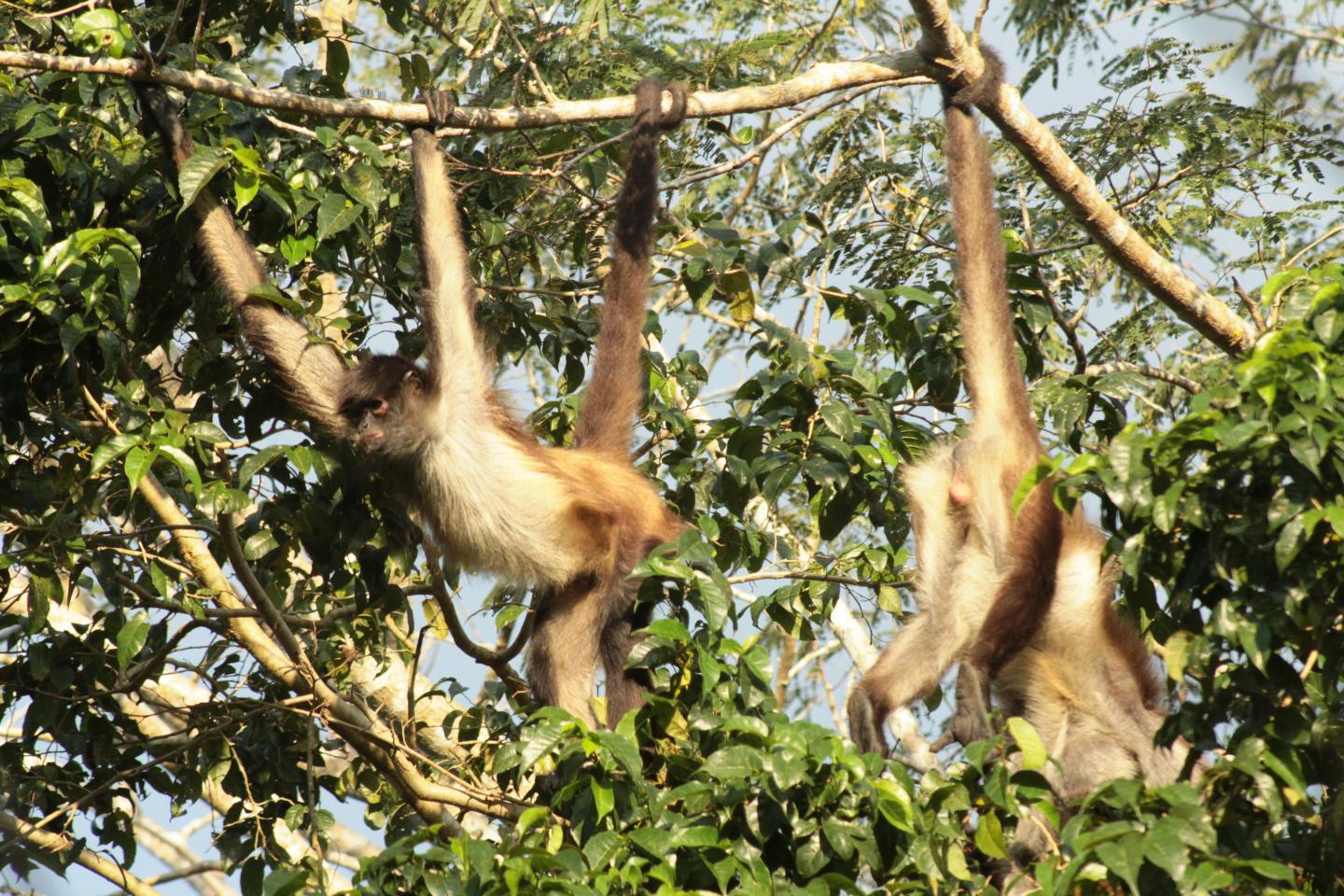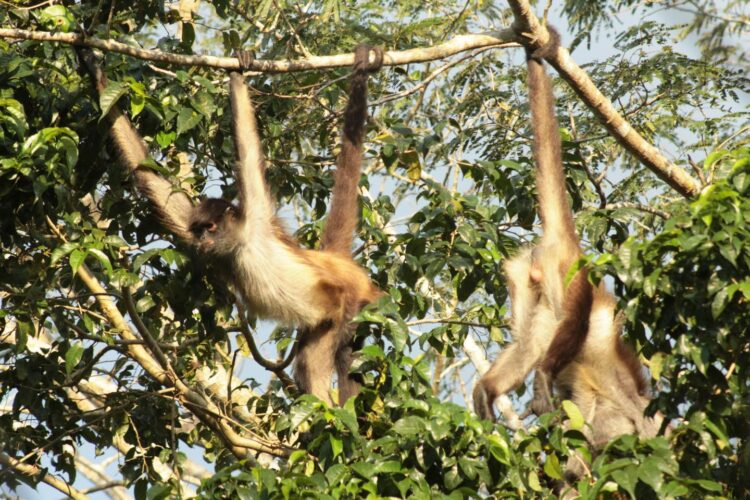
Credit: Sandra E. Smith Aguilar
The wild spider monkeys living in a protected area near Punta Laguna, Mexico, collectively figure out good ways to divide up and conquer the forest. These monkeys live in a special type of society called a “fission-fusion” society. The group breaks up into little teams to find food — called, “foraging” in the world of ecology — but there is no “gym teacher” or “popular kid” picking teams. Rather, the monkeys each make decisions about how long to stay on foraging teams and when to switch to another. It turns out the collective effect of these individual decisions is to produce a range of foraging team sizes. And this range works well given how many trees in the forest have tasty fruit ready to eat. The monkeys are collectively computing good team sizes given the availability of food in the forest.
The findings are published this week in the journal Frontiers in Robotics and AI. The researchers — from the National Autonomous University of Mexico (UNAM) and the Santa Fe Institute, in Santa Fe, NM — report that monkeys make use of the smarts of their group mates to inform their own decisions.
“By forming these subgroups — constantly coming together and splitting — the spider monkeys develop a more thorough knowledge of their environment,” says the study’s lead author, Gabriel Ramos-Fernandez at UNAM, who studies animal communication, social complexity and networks. “They seem to be pooling information about resources, so that as a group they know their environment better than any individual does on its own.”
Ramos-Fernandez and his group recorded the interactions of 47 monkeys for five hours per day over two years. He says the monkeys, which are accustomed to being observed by people, typically formed subgroups of 2 to 17 animals, but those subgroups typically stayed together only for 1-2 hours. “We noted who was where, and with whom, at any given time,” he says.
To understand how the monkeys to collectively compute team sizes, Ramos-Fernandez’s team collaborated with SFI Professor Jessica Flack and SFI President David Krakauer. Flack leads SFI’s Collective Computation Group, and Krakauer is co-developer of the collective computation ideas with Flack.
The researchers used an approach called inductive game theory, developed by Flack and Krakauer in collaboration with another SFI researcher, Simon DeDeo, to figure out what decision rules the spider monkeys use in deciding to stay on or leave a foraging team. In traditional game theory, researchers make assumptions about the strategies in play. Inductive game theory, in contrast, asks what strategies are the animals (or cells or neurons) actually using–what do we see in the data? Inductive Game Theory starts by specifying in advance a space of decision rules the study subjects — here spider monkeys — could be using given their cognitive and behavioral sophistication and, ideally, for which there is already some empirical support. The researchers search the data for evidence of these strategies and then ask how the strategies the individuals are found to use, combine to produce social structure.
“This kind of methodology is useful for studying optimal foraging because it requires no a priori assumptions about benefits and costs,” says Ramos-Fernandez. The researchers found individual monkeys’ decisions to stay or leave a foraging team were influenced by the stay and leave decisions of other individuals on the team. This result suggests spider monkeys take into account the opinions of their group mates about what a good team size is and use those opinions to inform their own decision-making. The collective effects of these decisions produced a range of team sizes that worked well given the availability of fruiting trees in the monkeys’ forest. But the researchers also found that the spider monkeys’ “collective intelligence” had room for improvement! The team sizes the monkeys collectively computed were not a perfect match to the availability of fruiting trees.
A similar approach might help researchers understand other collective systems, including flocks of birds, groups of fish, or financial markets. Insights from this study also reinforce an idea in the collective intelligence literature that in decentralized systems when individual parts or agents have imperfect knowledge or only partial windows on the world, collective pooling of knowledge can be beneficial. Questions for future work include studying how individuals optimally combine the knowledge of group mates, depending on how diverse the group is, and how costly it is to make mistakes.
###
Media Contact
J Marshall
[email protected]
Related Journal Article
http://dx.





